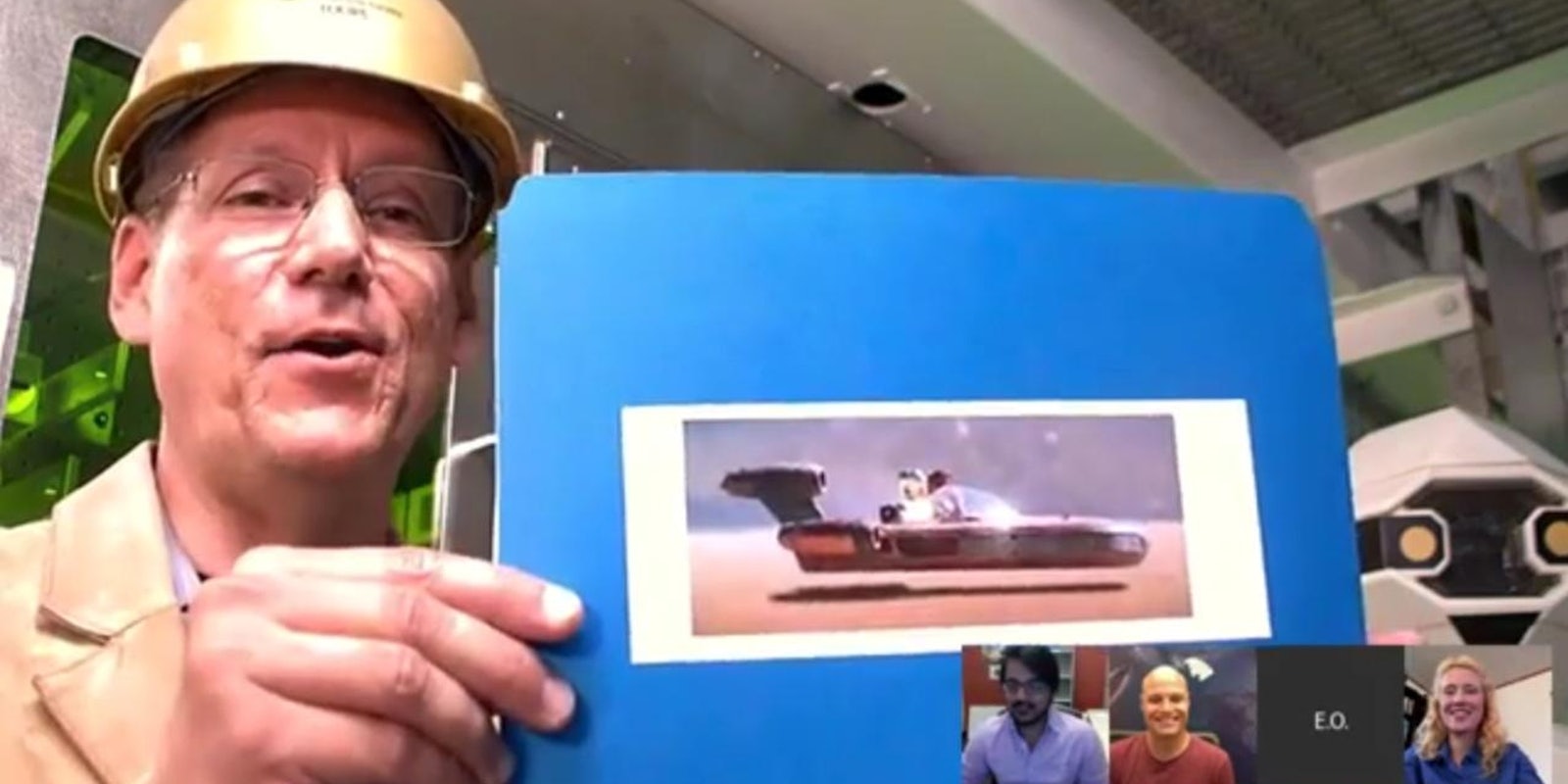If there’s one thing Star Wars geeks love, it’s taking apart the minutiae of the franchise, from spaceship propulsion systems to lightsaber designs. The U.S. Department of Energy capitalized on that nerdery on Friday with a Google Hangout in which scientists from its national laboratories answered Twitter questions about energy use in the saga.
“We often talk with experts about how energy works on Earth,” Energy Department public-affairs specialist Pat Adams wrote on the department’s website. “But what if they could use their knowledge to discuss how energy works in a galaxy far far away? Star Wars fans, this one’s for you.”
The department solicited questions using the hashtag #StarWarsEnergy. A quick search of the hashtag shows that the questions—not all of which were answered in the Hangout—ranged from the obvious…
Did the thermal exhaust port the Rebels used to blow up the Death Star really need to exist? How do we keep reactors cool? #StarWarsEnergy
— Matt Dozier (@mattdozier) June 11, 2015
https://twitter.com/RocketGrrl13/status/609429108657922049
Which is more powerful @ENERGY, phasers or blasters? #StarWarsEnergy
— Phil Tenser (@pstenser) June 12, 2015
…to the, shall we say, esoteric…
What does the Republic’s intervention in the Wookiee/Trandoshan conflict mean for Kashyyyk’s extensive coal reserves? #StarWarsEnergy
— Coop (@eleventhirtyate) June 10, 2015
@ENERGY: What really would’ve happened when the Yuuzhan Vong moved one of Sernpidal’s moons onto a collision course w/ it? #StarWarsEnergy
— Eric Geller (@ericgeller) June 11, 2015
How does the Empire justify the expensive nationalization of Cloud City when tibanna gas prices have only gone up since? #StarWarsEnergy
— Coop (@eleventhirtyate) June 10, 2015
The scientists participating were Cathy Plesko of Los Alamos National Laboratory, Peter Thelin and Chris Ebbers of Lawrence Livermore National Laboratory, and Vishal Patel of Idaho National Laboratory’s Center for Space Nuclear Research.
Each researcher brought a different discipline to the table (Plesko models asteroid impacts on supercomputers, while Patel studies nuclear power as a propulsion source), but it was clear that they all shared a love of science fiction, space fantasy, and real-world energy.
For the Energy Department, the educational opportunities were obvious.
Ever heard of a yottajoule? 1yottajoule = 1×10^24 joules #StarWarsEnergy #Yoda
— U.S. Department of Energy (@ENERGY) June 12, 2015
You can watch the Hangout below. Check out the Energy Department’s Twitter account for a recap of the conversation.
Screengrab via U.S. Department of Energy/YouTube


